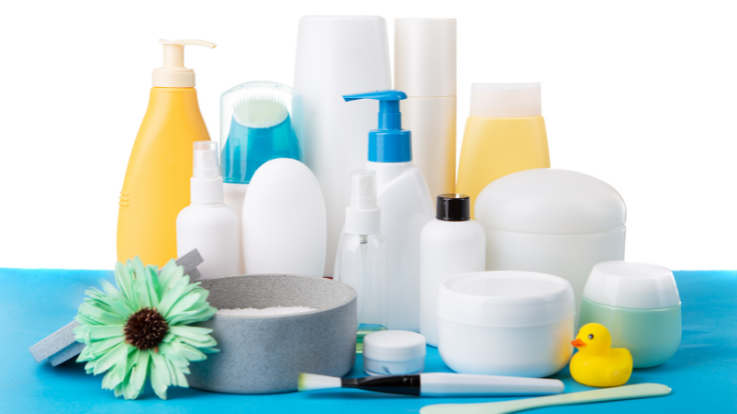Synthetic Chemicals may delay puberty in girls leading to long-term health concerns: Study

Chemical exposure may delay puberty in girls, research shows
A recent study conducted by the University of Cincinnati reveals that exposure to PFAS (per- and polyfluoroalkyl substances) may delay the onset of puberty in girls. The research, published in the journal Environmental Health Perspectives, provides the first evidence of the role hormones play in this delay.
Susan Pinney, PhD, the corresponding author of the study, says that delayed puberty in girls can have negative long-term health outcomes, including a higher incidence of breast cancer, renal disease, and thyroid disease.

Pinney further explains that puberty is a vulnerable period, and environmental exposures during this time have the potential for long-term health effects. The study involved 823 girls aged 6 to 8 years, who were monitored over time to observe the signs of breast development and pubic hair growth. The results showed that 85% of the girls had measurable levels of PFAS.
Pinney notes that the average delay in puberty for girls exposed to PFAS was around five to six months, but some girls experienced more significant delays.
Exploring Synthetic Chemical Products that Could Delay Puberty: What to Watch Out For

Certain synthetic chemicals have been suggested that potentially impact puberty and interfere with the body's endocrine system. Here are some examples of synthetic chemicals that have been linked to potential delays in puberty:
1. Phthalates: Found in various products such as plastics, personal care items (like fragrances, lotions, and nail polish), and certain household items. Phthalates have been associated with hormone disruption and may have an impact on the timing of puberty.
2. Bisphenol-A (BPA): Commonly used in the production of plastics, including food and beverage containers, can linings, and thermal paper receipts. BPA has been indicated to potentially disrupt the endocrine system and affect the onset and progression of puberty.
3. Perfluorinated chemicals (PFCs): Found in non-stick cookware, waterproof clothing, stain-resistant fabrics, and some food packaging. Research suggests that exposure to PFCs might be associated with delayed puberty in both boys and girls.
4. Organophosphate pesticides: These pesticides are used in conventional agriculture to protect crops from pests. Some studies have found a potential link between exposure to certain pesticides and earlier onset of puberty, while others have suggested delayed puberty.
5. Triclosan: An antibacterial agent found in many personal care products such as soaps, toothpaste, and certain cosmetics. Triclosan has been associated with potential endocrine disruption and may impact puberty in both males and females.
6. Parabens: These are preservatives used in various cosmetics, personal care products, and pharmaceuticals. While research on parabens and puberty is limited, some studies suggest that parabens may interfere with hormone-signaling systems.
Examples of Commonly Used Products in Daily Life that Contains Synthetic Chemicals

There are several daily-life products that can contain synthetic chemicals. Here are some examples:
1. Personal care products: Items such as shampoos, conditioners, body washes, soaps, lotions, deodorants, perfumes, makeup, and skincare products often contain synthetic chemicals like parabens, phthalates, fragrances, and preservatives.
2. Cleaning products: Household cleaning products like detergents, surface cleaners, disinfectants, air fresheners, and fabric softeners can contain synthetic chemicals such as ammonia, bleach, triclosan, and phthalates.
3. Food and beverage containers: Plastic food storage containers, water bottles, plastic wraps, and canned food linings may contain synthetic chemicals like bisphenol-A (BPA) and phthalates.
4. Pesticides and herbicides: These are commonly used in conventional agriculture to protect crops from pests. Pesticides and herbicides may be present on conventionally grown fruits, vegetables, and grains, as well as in gardening products used at home.
5. Non-stick cookware: Cookware coated with materials like Teflon can release synthetic chemicals when heated.
6. Children's toys and products: Some toys, baby bottles, pacifiers, and teething products may contain synthetic chemicals like phthalates, which are used to make plastic more flexible.
6. Electronics: Electronic devices, such as smartphones, laptops, and televisions, can contain synthetic components and chemicals that are used in their manufacturing processes.
7. Furniture and Cushions: Household furniture, mattresses, and cushions can contain synthetic flame retardants, which are added to meet fire safety regulations.
8. Clothing and textiles: Synthetic fibers, such as polyester and nylon, are commonly used in clothing and textiles. They may be treated with chemicals like formaldehyde or dyes that contain synthetic additives.
It is important to note that not all products within these categories contain harmful synthetic chemicals, and regulations vary in different countries. Reading product labels, choosing natural and organic alternatives, and being aware of potential chemical exposures can help reduce the impact on your daily life.
What Parents Can Do:

As a parent, you can take action to minimize exposure to harmful chemicals and promote the well-being of your children. Here are some suggestions:
1. Understand the risks: Educate yourself about the potential dangers of synthetic chemicals commonly found in our environment, such as phthalates, pesticides, and plastics. Stay updated on scientific research concerning the effects of these chemicals on puberty and long-term health. Knowledge is a powerful tool for making informed decisions.
2. Choose natural and organic products: Opt for natural and organic alternatives whenever possible. Look for household cleaning products, personal care items, and food that are free from harmful chemicals. These options can help reduce your child's exposure to synthetic chemicals and promote overall health.
3. Eat a balanced and organic diet: Provide your children with a balanced and nutritious diet that includes plenty of fruits, vegetables, whole grains, and lean proteins. Choose organic options as much as you can, as they are less likely to contain synthetic chemicals like pesticides and hormones.
4. Minimize plastic use: Plastic products can contain chemicals, such as bisphenol-A (BPA) and phthalates, which have been linked to hormone disruption. Encourage your family to use reusable glass, stainless steel, or BPA-free plastic containers for food and beverages. Avoid heating food in plastic containers or using plastic items in the microwave.
5. Filter your drinking water: Invest in a water filtration system that eliminates or reduces the presence of harmful chemicals and toxins in your drinking water. This can help minimize exposure to contaminants that may impact puberty and long-term health.
6. Foster a natural and toxin-free home: Create a healthy living environment by using natural cleaning products, eliminating or reducing the use of air fresheners, and ensuring proper ventilation. Enhancing indoor air quality can reduce exposure to synthetic chemicals.
By implementing these practices, you can proactively protect your child from the potential negative impacts of synthetic chemicals on puberty and long-term health. While complete avoidance might be challenging, taking these steps empowers you to make informed choices and create a healthier living environment for your family.
As a parent, it is important to be mindful of the potential risks associated with synthetic chemicals in daily life products. While the impact of these chemicals on puberty is still being studied, taking precautionary measures can help protect your child's health and well-being.
References:
Be the first to support
Be the first to share
Comment (0)
Related Blogs & Vlogs
No related events found.
Loading more...